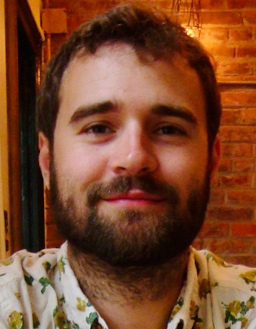Independent Investigator Awards
Recipients
 Maria Lehtinen, PhD
Maria Lehtinen, PhD
CSF-neurotransmitter regulation of the choroid plexus brain barrier
Professor Lehtinen’s award, entitled “CSF-neurotransmitter regulation of the choroid plexus brain barrier”, assesses the role of the choroid plexus (ChP) in the accumulation of the neurotransmitter, glutamate, and explain how excess glutamate could make the brain susceptible to psychiatric illness risk factors such as inflammation and exposure to environmental toxins. These hypotheses will be tested in mouse models and in postmortem human brain. Dr. Lehtinen will be one of the speakers at the upcoming Fuss Ground Rounds.
Next Generation Awards
Next Generation Awards are intended to advance the research productivity of outstanding scientists and laboratories to build research programs investigating developmental neuropsychiatric disease. These grants support basic research, fund pilot programs, establish proof-of-concept, and generate preliminary data to enable investigators to leap to the next stage of research.
Recipients
 Maria Jalbrzikowski, PhD
Maria Jalbrzikowski, PhD
Using a Neurodevelopmental Framework to Identify Risk Factors for Severe Psychiatric Disorders
First, Dr. Jalbrzikowski developed a proposal to use newly developed, low-field MRI technology in youth, with the goal of maximizing the public health impact of biological predictors of psychiatric risk. We need powerful tools that can translate our ever-expanding neurobiological understanding of psychiatric risk into clinical settings to halt the mental health disparities for marginalized and minority communities and increase the validity of predictive models, and ultimately, facilitate prevention of negative clinical outcomes. This proposal was submitted for National Institutes of Health review in June 2021.
A second, related research aim is to investigate the influence of social determinants (e.g., racism, poverty, exposure to pollution) on atypical neurodevelopment and how these factors contribute to increased vulnerability or protection for developing psychosis. Similar to a polygenic risk score, which summarizes the additive genetic effects on a particular phenotype, Dr. Jalbrzikowski will create an aggregate social determinant risk score for psychosis. To that end, she will conduct an online survey to assess social determinants associated with psychosis (e.g., poverty level, minority status, immigration status) in a sample of local youth (>2,000 responses) that accurately reflects the composition of the larger population. From these responses, she will calculate a distribution of an aggregate social determinant risk score and assess the extent to which this score maps onto psychotic experiences. If there is a statistically meaningful relationship between the social determinant risk score and psychotic experiences, she will then recruit children and adolescents that fall in the upper and lower deciles of this risk score to participate in a longitudinal study, and will also collect biological and clinical data to determine predictors of risk and resilience for psychosis.
A third study expands Dr. Jalbrzikowski’s work integrating neuroimaging and genetics. Accumulating genetic and neuroimaging findings show that biological findings do not conform to psychiatric disorder boundaries, likely due to overlapping and interacting genes. Thus, Dr. Jalbrzikowski plans to interrogate genomic and neural data independently to identify factors that are 1) associated with multiple of psychiatric disorders (clustered), 2) unique to an individual illness (unique), and/or 3) common to all psychiatric disorders (pan). Using data from NIH’s Psychiatric Genetic Consortium, we will first probe the clustered, unique, and pan genomic variations associated with mood and psychotic disorders. Then, using neuroimaging data from the UK Biobank, we will follow a similar approach to find clustered, unique, and pan neural factors associated with mood and psychotic disorders. We will then review similarities and differences between the genomic and neural data to assess the extent to which these genomic and neural factors predict differing clinical and behavioral trajectories.
 Todd E. Anthony, PhD
Todd E. Anthony, PhD
Optical and Molecular Dissection of Lateral Septal Stress Circuitry
Individuals vary in their resilience to the long-lasting consequences of stressful experiences, but the neural circuits and genes responsible for such differences are poorly understood. Inhibiting the function of a brain region called the lateral septum (LS) can suppress behavioral and physiological effects of stress, whereas increasing LS activity can exacerbate these effects. However, it is unknown how stressful stimuli modulate natural neural activity and gene expression patterns in LS neurons to tune the severity of stress-induced behavioral states, or how variability in these patterns may give rise to individual differences in the properties of such states. Using genetic, optical, and molecular approaches, this research program will define the relationship of LS neural activity dynamics and gene expression profiles to susceptibility to stress-induced anxiety in mice. Future studies will determine how key stress regulated genes influence LS activity and behavior, and test novel strategies for preventing or reversing stress-induced anxious states.
 Joseph Gonzalez-Heydrich, MD
Joseph Gonzalez-Heydrich, MD
Very Early Onset Psychosis: Forging a Path to Translational Therapies
The overarching goals of this research program are to identify genetic mutations implicated in very early onset psychosis (VEOP), discover their biological effects, and translate this knowledge into transformative treatments. A key element of the program is to create a registry of patients with genetic mutations implicated in VEOP and their unaffected family members and a collaborative network of institutions seeing these patients. Information in the registry is linked with biological samples from these patients and their family members. The Tommy Fuss Center Discovery Core uses this information to elucidate the biology of the mutations to guide the development of potential treatments to prevent the emergence of psychosis and promote healthy development in at-risk children. This work will position the collaborative network to test these treatments in clinical trials.
Innovation Awards
Innovation Awards are given to support pilot studies and research projects that advance the mission of the Tommy Fuss Center by exploring novel and promising domains, specifically to open up innovative avenues of discovery that can seed more mature research.
Recipients
 Todd E. Anthony, PhD
Todd E. Anthony, PhD
Bottom-up control of cortical sensory processing and threat perception
Exposure to severe stress results in transient elevations of vigilance and defensive behaviors that function to promote survival in the face of danger. While adaptive, the excessive persistence of these stress-induced responses in susceptible individuals can result in psychiatric conditions such as Post-traumatic Stress Disorder (PTSD) that are associated with chronic hyperarousal, vigilance, and sensory hypersensitivity. Although existing treatments are incompletely effective for most individuals with these illnesses, development of more efficacious therapies has been hindered by limited understanding of the basic neural mechanisms that regulate threat processing and defensive behavioral states. Importantly, human neuroimaging studies have consistently revealed dysfunction in a brain structure called the hippocampus (HPC) in patients with PTSD.
Moreover, extensive data derived from studies done in model organisms has identified the lateral septum (LS), the primary deep brain structure which receives output from HPC, as a key regulator of stress-induced defensive behavioral states. Multiple human studies have also linked LS abnormalities to increased susceptibility for developing PTSD following a traumatic experience. However, the precise contribution made by the LS to the induction and maintenance of persistent defensive states remains unclear.
Classic rodent studies revealed that disruption of the septal area can produce extreme sensory hypersensitivity, exaggerated defensive reactions to nonthreatening environmental cues, and delayed habituation to innocuous stimuli. Moreover, electrical stimulation of LS can modulate cortical responses to visual and auditory stimuli. However, current models are largely dominated by the conceptualization of LS as a structure that controls specific behaviors through projections to other deep brain regions; the LS circuits that regulate arousal and vigilance, and their potential role in bottom-up modulation of sensory processing in the cortex, have not been clearly defined.
In preliminary studies, we have identified a particular subset of LS neurons that are both anatomically connected to and functionally influence neurons in the cortex, and obtained evidence that these interactions may produce exaggerated responses to non-threatening environmental stimuli. Here, we propose to test a working model of how discrete LS to cortex pathways may contribute to stress-dependent modulation of threat perception and sensory processing which, when dysregulated, could contribute to chronic psychiatric disorders such PTSD.
 Maria Jalbrzikowski, PhD
Maria Jalbrzikowski, PhD
Using a Neurodevelopmental Framework to Identify Risk Factors for Severe Psychiatric Disorders
This project proposes to use electronic health records to find objective markers of risk for psychotic and bipolar disorder in U.S. youth. We will use data-driven approaches to identify meaningful, temporally linked associations between multiple measures of risk and subsequent psychotic or bipolar disorder diagnoses. We will first validate that hospital presentation with intentional self-harm is associated increased risk for a subsequent diagnosis of psychotic or bipolar disorder. We will then test how an array of other objective predictors (e.g., medical or psychiatric comorbidities, childhood trauma, neuroimaging scores from clinical MRIs) confer elevated risk for severe psychopathology onset. Results from this study will allow us to use electronic health records to identify cost-effective indicators of severe psychopathology, ultimately improving identification of young people at greatest risk and allowing earlier more effective interventions.
 Michelle Bosquet Enlow, PhD
Michelle Bosquet Enlow, PhD
Developmental Pathways to Anxiety in the First Five Years of Life
Anxiety disorders are the most common psychiatric illnesses of childhood and often have lifelong negative consequences. Longitudinal studies starting in infancy are needed that examine how biological, psychological, and environmental factors in early life combine to influence the development and maintenance of anxiety. Such research can contribute to the creation of novel measures that can identify children at risk for anxiety difficulties as well as inform the development of innovative therapies to prevent anxiety disorders. The goal of this study is to investigate the combined effects of neural, behavioral, genetic, physiological, and environmental risk factors in early life on the development of child anxiety. We expect that the findings will (a) uncover non-invasive biomarkers that can identify children at heightened risk for developing anxiety and (b) inform the development of transformative innovative therapies to treat anxious children and to prevent the development of anxiety in at- risk children prior to the emergence of symptoms.
 Takao K. Hensch, PhD
Takao K. Hensch, PhD
Gender Differences in Emergent Neuropsychiatric Disorders: Impact of Early Adversity
Mechanisms underlying sex differences in psychiatric illness are not fully understood. Early life adversity, such as neglect, is particularly associated with internalizing (depression, anxiety, alcohol use disorders) or externalizing (social dominance, compulsive behaviors) symptoms in women and men, respectively. Strikingly, for children raised by parents with psychosis, epidemiological studies suggest the opposite trend. This suggests a complex gene-environment interaction between early adversity and psychosis risk, calling for more precise measures and conceptual frameworks. We perform mechanistic studies in mouse models of adversity and psychosis risk to better understand the emergence of psychiatric illness in childhood and to yield novel biomarkers for tracking their etiology and eventual prevention.
 Maria Lehtinen, PhD
Maria Lehtinen, PhD
Choroid Plexus Activity in Psychiatric Disease
Serotonin and melatonin, two compounds commonly used in treating mental illness, have many brain targets. Aside from their neuronal targets, these compounds affect the choroid plexus (ChP), a sheet of cells that produces the cerebrospinal fluid (CSF) that bathes all neurons. Yet, the ChP has been largely overlooked in psychiatric disease research. Here, we test the hypothesis that serotonin and melatonin levels in the CSF fluctuate across development and time of day and thereby regulate ChP activity and availability of secreted health and growth-promoting factors in the CSF. We will use cutting-edge optical, genetic, molecular and other methods for activating ChP cells and for comprehensive assessment of changes in ChP gene expression and CSF composition. Consideration of the rich and dynamic CSF medium that bathes all neurons, and how this medium changes with sleep and day/night cycle, should have major implications for treatment of psychiatric disorders and for understanding side effects of existing treatments (e.g. SSRIs) on ChP and CSF.
 Kimberly O’Brien, PhD
Kimberly O’Brien, PhD
Development of a mHealth Booster for a Brief Alcohol Intervention for Suicidal Adolescents
Alcohol use puts adolescents with suicide-related thoughts and behaviors at high risk for attempted suicide and suicide death. Greater attention to the assessment and initial treatment of alcohol use in adolescent inpatient psychiatric settings, and having a post-discharge follow-up plan to reinforce the treatment they received in the hospital and ensure the safety of the suicidal adolescent at home, are essential. The goal of this project is to build upon an innovative brief alcohol intervention for adolescents hospitalized for a suicide plan or attempt who drink alcohol by developing a mHealth booster to be delivered to adolescents and parents when the adolescent returns home from the hospital. The design of the mHealth booster will be refined by obtaining feedback on the proposed content, interface, and functionality via in-depth interviews with 8 adolescents and 8 parents who have completed the in-person component of the intervention in an ongoing pilot trial.
 Annapurna Poduri, MD, MPH
Annapurna Poduri, MD, MPH
Zebrafish Models of the Epilepsy-Schizophrenia Overlap:From Genes to Drug Screens
Epilepsy is defined by recurrent, unprovoked seizures and affects 1 in 26 people, many of them children. Schizophrenia, marked by disordered thought processes, affects 1 in 100 people, often beginning in adolescence or early adulthood. Individuals with epilepsy are at higher risk of developing schizophrenia, while individuals with schizophrenia are at higher risk for epilepsy. Both conditions are influenced by genetics, including some genes associated with both conditions. We have undertaken an innovative approach to study these conditions together using zebrafish, an efficient vertebrate model system in which to study neurodevelopmental disease. We will create models of genes associated with both conditions, analyze them for features relevant to these conditions, and prioritize genes for drug screens to identify therapeutic compounds. The goals of our research are thus aligned with the mission of the Tommy Fuss Center and a vision of translating gene discovery into potential therapeutic or even preventative interventions for those at risk for developing epilepsy and schizophrenia.
 Mustafa Sahin, MD, PhD
Mustafa Sahin, MD, PhD
Striatal Deficits in the Development of Schizophrenia in Patients with Copy Number Variations of 16p11.2
Schizophrenia is a serious mental disorder that profoundly affects a patient’s life. Previous studies have shown that dopaminergic neuron function and dopamine secretion are abnormal in the brain of schizophrenia patients. Medium spiny neurons (MSNs) mediate dopamine signaling via expression of dopaminergic receptors D1 and D2. A molecular regulator known as MAPK3 is located in the gene region of 16p11.2, and duplication of this region has been associated with schizophrenia. MAPK3 regulates expression of ERK1-MAP-kinase, which has been shown to regulate survival and function of the neurons in the striatum. Here we propose to investigate the role of 16p11.2 duplication in human stem cell-derived MSNs. We will also develop a novel co-culture model of patient-derived MSNs and DA neurons that will facilitate characterization of the network functionality and gene expression pathways that are affected in the patient cells with 16p11.2 duplication. This study will also aim to find novel targets for development of new drugs and treatment options for patients with schizophrenia in the future.
 Elizabeth Wharff, PhD, MSW
Elizabeth Wharff, PhD, MSW
Family-Based Crisis Intervention for Suicidal Adolescents: Adaptation for Primary Care
Adolescent suicide is the second leading cause of death in the US. Nearly 90% of youths who have attempted suicide report that they had visited their primary care provider during the 12 months preceding their attempt. Most primary care providers who know that a patient is suicidal refer them to the Emergency Department (ED), which usually results in extensive wait times for the patients, followed by admission to an inpatient psychiatric unit. The researchers developed the Family-Based Crisis Intervention (FBCI), an intervention designed to provide psychiatric treatment in the ED for suicidal adolescents and their families. A test of FBCI showed that 68% of adolescents who received FBCI were able to safely return home with their families, and that families who received FBCI were more satisfied with care and felt more empowered to help their children compared to those who did not. This research aims to see if FBCI can be used in primary care. This research is directly aligned with the Tommy Fuss Center mission, as it encompasses early detection, prevention, and intervention.
Young Investigator Awards
Young Investigator Awards provide support for the most promising young scientists conducting pediatric neuropsychiatric research. These two-year awards enable promising investigators to begin careers as independent research faculty.
Recipients
 Philip Boone, MD, PhD
Philip Boone, MD, PhD
Aberrant Recursive Splicing as a cause of ADHD and a novel mechanism for human disease
Dr Boone will investigate the CADM2 gene, a risk gene for attention deficit hyperactivity disorder (ADHD). Entitled “Aberrant Recursive Splicing as a cause of ADHD and a novel mechanism for human disease”, he will characterize human induced neuronal models of CADM2 deletions, identify behavior changes in a cadm2 RS-deficient zebrafish, and establish the phenotypic presentation of human patients with aberrant CADM2.
 Akiko Terauchi, PhD
Akiko Terauchi, PhD
Adolescent social isolation: how it impacts the dopaminergic circuit and contributes to depressive disorders
The COVID-19 pandemic affects our mental health, and symptoms of depressive disorders are increased considerably. The emergence of these disorders is thought to be caused by loneliness created by social isolation (SI).
Adolescence is a developmental period of heightened sensitivity to social stimuli. Social stimuli during this period have a critical role in regulating neural development and behavior. Perturbation of social stimuli (such as SI) in adolescence alters brain functions and behaviors and increases the risk of depressive disorders during and after adolescence. Thus, research on the effects of SI on adolescent brain development and the underlying mechanisms of behavioral consequences is urgently required for a better understanding of the etiology of SI-dependent depressive disorders and for the development of novel therapies and clinical interventions.
 Samuel Mathias, PhD
Samuel Mathias, PhD
Brain-age prediction as a window into neurodevelopment in young people with psychiatric disorders
Several psychiatric disorders that emerge in childhood or adolescence (e.g., attention deficit/hyperactivity disorder) are associated with deviations from typical brain development. Stressors in early life (e.g., substance abuse) also cause neurodevelopmental disruption and often lead to psychiatric disorders. Recent studies have shown that machine learning can accurately predict a typically developing person’s age based on their neuroimaging data. Accurate prediction of age at the group level may allow precise detection of neurodevelopmental disruption at the individual level. Thus, neuroimaging-base age prediction may provide a window into in vivo brain development and therefore has potential to yield new objective biomarkers for neurodevelopmental psychiatric disorders and brain health that may allow early detection, progression monitoring, and treatment evaluation. In this project, I propose to explore the effectiveness, generalizability, and clinical utility multimodal neuroimaging-based age prediction in pediatric samples using publicly available data from around 20,000 participants across eight different studies (all 3–25 years old, around 50% female). Because most of these studies are population-based, rates of common psychiatric disorders are consistent with their population prevalence. Structural and functional magnetic resonance images from the subset of participants without neurological or psychiatric disorders will be used to train a machine-learning age-prediction model, which will be evaluated four out-of-sample accuracy using holdout data. Next, a neurodevelopmental index (NI), defined as a participant’s predicted (brain) age minus their chronological (true) age, will be calculated for all participants, including those with psychiatric disorders. Previous work suggests that neurodevelopmental psychiatric disorders are associated with brain underdevelopment; therefore, it is hypothesized that individuals with neurodevelopmental psychiatric disorders have lower NI than controls. Neuroimaging-based age prediction has potential to detect disruptions in brain development associated with psychiatric symptoms, early life stress, and impaired cognitive and social function in young people irrespective of whether they meet diagnostic criteria for a psychiatric disorder. Therefore, it is also hypothesized that that NI predicts quantitative measures of these constructs across all participants. Support for these hypotheses will demonstrate the effectiveness, generalizability, and clinical potential of pediatric neuroimaging-based age prediction, bringing us a step closer to the long-term goal of creating biomarkers for psychiatric disorders from neuroimaging data in pediatric samples.
